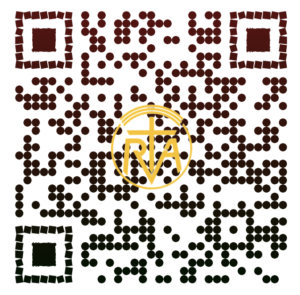

Myanmar ramih biaknak thuanthu kan thlirsal tikah Khristian le Buddha pawl karlak ah buainak le remawk lonak a um tuk lemlo. Asinan, khatlamih kan zoh tikah, tu hnak ih remawknak um sinsin a tul a si, timi khal fiangten kan hmuh. Curuangah Khristian le Buhha biaknak karlak ah biaknak ruahkhawmnak cu hmun hrekkhat ah a caancaan ah tuah a si. Asinan, biaknak ruahkhawmnak tuah tikah harsatnak le dawnkhamtu tampi an um. A tangah a thupi mi dawnkhawmtu hrekkhat pawl kan von zoh ding.
- Ngaihsak Awklonak Ruangah: A pakhatnak dawnkhamtu cu Khristian lam in siseh, Buddha lam in siseh, ngaihsakawk lonak (ignorance) a um ruangah a si. Myanmar ramah Buddha pawl cu zatek 89 hrawng an umih Khristian pawl cu zatek 5 hrawng an um. Buddha tampi pawl ih thinlung sungah kannih cu mitam sawn kan si ruangah Khristian pawl hnak in kan dinhmun a sang deuh (superiority) a si tin ruahnak an nei. Cun Khristian hrekkhat pawl khal in kannih cu Buddha pawl hnakin kan mal sawn ruangah kan dinhmun a niam deuh a si (inferiority) tin a ruat tu an um. Khatlam khatlam in hivek thinlung ruahnak an neih veve ruangah pakhat le pakhat ngaihsak aw loin an um.
- Phunhnam Ruangah: Myanmar ramih a um mi Buddha tamsawn cu Kawlmi an siih Khristian tam sawn cu Shan, Kachin, Chin, Karen, Rakhai le Kaya miphun pawl an si. Ukawknak thu le biaknak thu ruangah Kawlmi le phunhnam dang pawl kar lakah theithiam loawknak a phunphun a um. Curuangah Khristian le Buddha kar lakih biaknak ruahkhawmnak cu Kawl miphun le hnamdang karlak ih ruahkhawmnak phun ah a cang theu. Curuangah phunhnam cu biaknak ruahkhawmnak dawnkhamtu pakhat ah a cang.
- Khristian Biaknak cu Ramdang Biaknak ih Ruahsual Ruangah: Khristian biaknak cu ramdang ahleice in nitlaknak ram ihsin Myanmar ah a ra thleng. Curuangah Buddha tampi cun Kristian biaknak cu ramdang biaknak a si tiin an ruat ih an cohlang thei lo. Khristian pawl thawn biaknak ruahkhawmnak tuah cu ramdang biaknak thawn biaknak thu rel tlang thawn a bang aw a si an ti. Hivek thinlung ruahnak in Kristian le Budda pawl biaknak ruahkhawmnak cang thei loin a dawnkham a si.
- Biaknak Ruahkhawmnak ih Thupitnak Theihfiang Lonak: Biaknak ruahkhawmnak ih tulnak le thupitnak cu Khristian lam in siseh, Buddha lam in siseh mitampi in fiangten an thei ngah lo. Himi hi
Leitlun le biaknak pawl lakah remnak le daihnak a um theinak ding hrangah siseh, Bawi Jesuh ih thlacam mi a tlamtlin theinak ding hrangah siseh, biaknak ruahkhawmnak tuah cu a thupizet mi le a tul hrimhrim mi a si.
Ronmi:
Lucas Tha Ling Sum, “Dialogue as a Path for Mutual Understanding and Peace between Christianity and Buddhism in Myanmar,” in Vidyajyoti Journal of Theological Reflection, Vol. 76, no. 6 (2012): 36-50.
3.3. Some Obstacles for Interrelations Dialogue in Myanmar
The actual dialogue between the Buddhists and the Christians in Myanmar still faces a full spectrum of religio-political difficulties. We will now address some of the major significant hindrances of dialogue in what follows. But one should keep in mind that the following are certainly not exhaustive.
The first obstacle is ‘ignorance’ from both sides. 89% of Myanmar is Buddhist, and 5% Christian. Today, if we take a close look at the current religious situation of Myanmar there is a sense of superiority on the part of the Buddhists, while the Christians tend toward attitudes of inferiority. Consequently, ignorance emerges from both sides. This means that both many Buddhists and many Christians pay little attention to each other as far as religion is concerned.
Second, almost all Buddhists belong to an ethnic group called Barmans (or Burmese). Conversely, a great majority of Christians belong to other ethnic groups of minority such as the Shans, Kachins, Chins, Karens, Rakhais and Kayahs. Due to both political reasons and religious reasons, there are some tensions between the Barmans and other ethnic peoples, especially in some remote areas in the country. In this context, a dialogue between the Buddhists and the Christians in Myanmar means a dialogue between ethnic Barma and all other six ethnic groups in the country. As a result, different ethnical issues hinder potential dialogue.
Third, as said, Christianity in Myanmar is often considered a foreign religion by many Buddhists. In this context, from a perspective of Buddhists, dialogue between the Buddhists and Christians somewhat becomes a dialogue between the Buddhists and foreign Christians or a dialogue between Buddhism and foreign religion.
Fourth,on the side of the Christians, at least in my view, many of them are not well convinced of the importance and necessity of dialogue with the Buddhists.
Fifth and final, religious freedom is often limited, at least in some parts of the country. This means that the limitation of religious freedom is also a stumbling block for dialogue in Myanmar.
Rev. Fr. Lucas Tha Ling Sum ih ngan mi asi.



